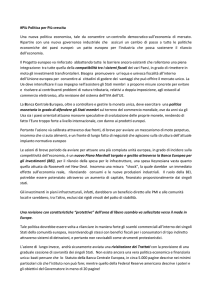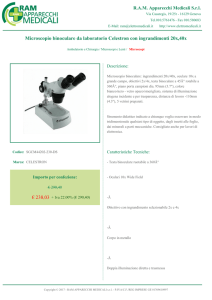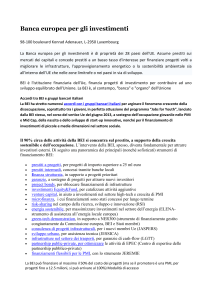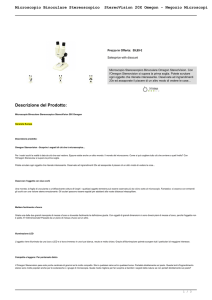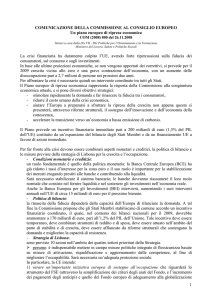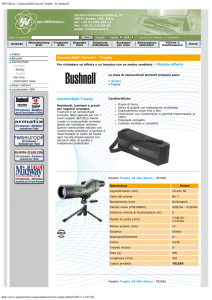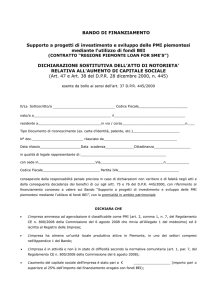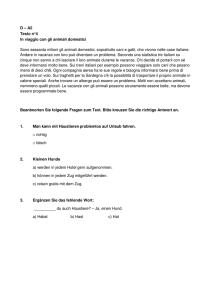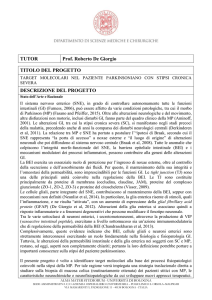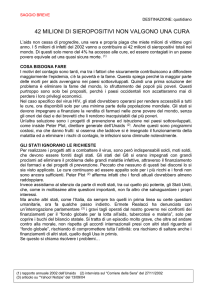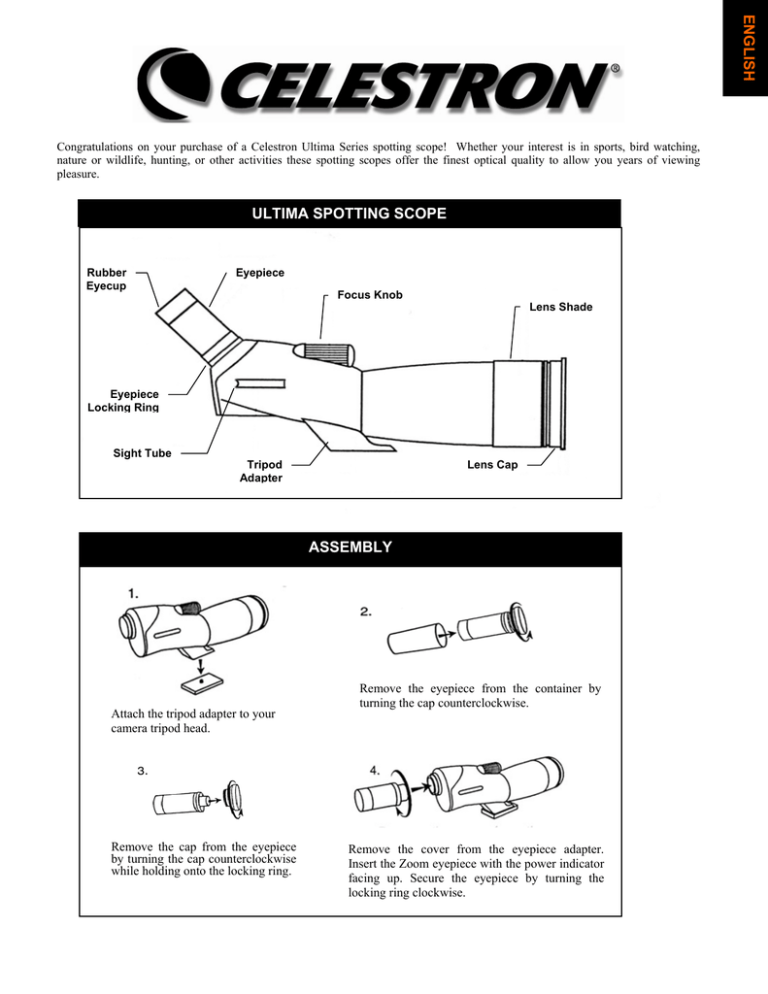
ENGLISH
Congratulations on your purchase of a Celestron Ultima Series spotting scope! Whether your interest is in sports, bird watching,
nature or wildlife, hunting, or other activities these spotting scopes offer the finest optical quality to allow you years of viewing
pleasure.
ULTIMA SPOTTING SCOPE
Rubber
Eyecup
Eyepiece
Focus Knob
Lens Shade
Eyepiece
Locking Ring
Sight Tube
Tripod
Adapter
Lens Cap
ASSEMBLY
Attach the tripod adapter to your
camera tripod head.
Remove the cap from the eyepiece
by turning the cap counterclockwise
while holding onto the locking ring.
Remove the eyepiece from the container by
turning the cap counterclockwise.
Remove the cover from the eyepiece adapter.
Insert the Zoom eyepiece with the power indicator
facing up. Secure the eyepiece by turning the
locking ring clockwise.
Warning Note: Never look directly at the Sun with the naked eye or with your spotting scope. Permanent eye damage
may result.
Before Observing
Attach your spotting scope to a photo/video tripod before trying to observe as the size and power of the spotting scope requires
a solid tripod to be able to see sharp and steady views. For the Ultima 100 models a Tripod Balancing Platform should be
installed for optimum balancing on a tripod (see information below).
Make sure to remove the lens cap prior to observing. You can use the sight tube to
locate the object you want to look at and then look through the eyepiece.
Using the Rubber Eyecup
The zoom eyepiece includes a soft rubber eyecup for eyeglass wearers. Fold down the
rubber eyecups to observe the full field of view when wearing eyeglasses. If you
do not use eyeglasses, leave the rubber eyecup in the up position.
Focusing
To focus slowly rotate the focuser knob until the image in the eyepiece is
clear and sharp. Refocusing is usually required if the power is changed.
If you feel the focus knob no longer moves any further (in either
direction), then you have reached the end of the travel range -- don’t try
to force it to go further but you should refocus by turning in the opposite
direction. Once an image is in focus, turn the knob clockwise to focus on
a closer object and counterclockwise for a more distant object.
Changing the Magnification (Power)
Rotate the magnification ring around the zoom eyepiece to change the
power level of the spotting scope. Refocus as needed. The brightest and
widest field of view will always be at the lowest power.
Photography
With 35mm SLR Cameras:
To use your spotting scope as a telephoto lens, remove the rubber eyecup from the top of the eyepiece. You will shoot through
the spotting scope with the eyepiece attached. Thread an optional T-Ring for your make and model of 35mm camera onto the
T-threads located at the top of the eyepiece. For Ultima 65 models, thread the T-ring adapter (included with your model) onto
the eyepiece threads, then you thread a T-Ring onto the eyepiece. Attach your 35mm camera body to the T-Ring. Ultima
spotting scopes have fixed apertures and, as a result, fixed f/ratios. To properly expose your subjects photographically, you
need to set your shutter speed accordingly. Most 35mm SLR cameras offer through-the-lens metering which lets you know if
your picture is under or overexposed. Adjustments for proper exposures are made by changing the shutter speed. Consult your
camera manual for specific information on metering and changing shutter speeds.
Hint: Most photos will be the sharpest and brightest when using the lowest power on the zoom eyepiece.
35mm Camera
body
Spotting
Scope
T-Ring (Optional Item)
T-ring adapter (for
Ultima 65 only)
Eyepiece with rubber
eyecup removed
With Digital Cameras:
Since digital cameras (not digital SLR cameras) do not use the T-system to mount cameras to lenses, spotting scopes,
telescopes, etc. you need a different way to be able to use them to take photos. Celestron offers a Universal Digital Camera
Adapter (Model # 93626) which makes it easy to attach a digital camera to your Ultima spotting scope.
Tripod Balancing Platform (for Ultima 100 models)
This is used on Ultima 100 models to properly balance your spotting scope on top of a photo/video tripod.
¼"-20 Mounting Screw
Locking Ring
¼"-20 Threaded Hole
(not shown)
Mounting Screw
To use the tripod balancing platform:
Mount the platform to the top of your photo tripod using the ¼"-20 threaded hole on the bottom side of the platform.
Attach your spotting scope to the platform using the ¼"-20 mounting screw located on the top side of the platform. Thread the mounting screw in as far as it
will go. Slide the attached spotting scope along the slotted cutout until your spotting scope is balanced on the tripod.
Tighten the locking ring to hold the spotting scope in place.
Maintenance
To protect your spotting scope when not being used, put on all lens covers and the lens cap to keep the optics clean and then put
the scope in the soft carrying case. If your optics could use cleaning, use an optics cleaning kit and follow the instructions.
Specifications
Model
52248
52249
52250
52254
Ultima 65
52247
Ultima
65ED
52252
52257
Ultima 80
52251
Ultima
80ED
Description
Ultima 65
Viewing Position
45° Angled
Ultima 80
Straight
45° Angled
45° Angled
Aperture - mm
65
65
65
Focal Length - mm
386
386
Magnification
18x-55x
18x-55x
Eyepiece - Zoom
7-21mm
Angular Field
Ultima 100
Ultima 100
Straight
45° Angled
45° Angled
Straight
45° Angled
80
80
80
100
100
100
386
480
480
480
540
540
540
16x-48x
20x-60x
20x-60x
20x-60x
22x-66x
22x-66x
22x-66x
7-21mm
8-24mm
8-24mm
8-24mm
8-24mm
8-24mm
8-24mm
8-24mm
1.7° @ 18x
1.7° @ 18x
2.5° @ 16x
2.0° @ 20x
2.0° @ 20x
2.0° @ 20x
1.8° @ 22x
1.8° @ 22x
1.8° @ 22x
0.7° @ 55x
0.7° @ 55x
1.3° @ 48x
1.0° @ 60x
1.0° @ 60x
1.0° @ 60x
1.0° @ 66x
1.0° @ 66x
1.0° @ 66x
Linear Field of View
89 @ 18x
89 @ 18x
131 @ 16x
105 @ 20x
105 @ 20x
105 @ 20x
95 @ 22x
95 @ 22x
95 @ 22x
- feet @ 1000 yds.
Eye Relief
38 @ 55x
18mm @
18x
38 @ 55x
18mm @
18x
66 @ 48x
18mm @
16x
53 @ 60x
18mm @
20x
53 @ 60x
18mm @
20x
53 @ 60x
18mm @
20x
53 @ 66x
18mm @
22x
53 @ 66x
18mm @
22x
53 @ 66x
18mm @
22x
Near Focus
20ft @ 18x
20ft @ 18x
20ft @ 16x
27ft @ 20x
27ft @ 20x
27ft @ 20x
6.1m @ 18x
6.1m @ 18x
6.1m @ 18x
8.2m @ 20x
8.2m @ 20x
8.2m @ 20x
33ft @ 22x
10.0m @
22x
33ft @ 22x
10.0m @
22x
33ft @ 22x
10.0m @
22x
Yes
MultiCoated
Yes
MultiCoated
Yes
MultiCoated
Yes
MultiCoated
Yes
MultiCoated
Yes
MultiCoated
Yes
MultiCoated
Yes
MultiCoated
Yes
MultiCoated
Yes
13" 330mm
37oz. 1.1kg
Yes
16" 406mm
37oz. 1.1kg
Yes
13" 330mm
37oz. 1.1kg
Yes
16" 406mm
57oz. 1.6kg
Yes
Yes
16" 406mm
57oz. 1.6kg
Yes
19" 483mm
72oz. 2.0kg
Yes
22" 559mm
72oz. 2.0kg
Yes
19" 483mm
72oz. 2.0kg
of View
Prisms - BaK - 4
Optical Coatings
Waterproof
Length
Weight
19" 483mm
57oz. 1.6kg
52253
Ultima 100
ED
Note: All specifications are subject to change without notice.
Warranty
Ultima Spotting Scopes have the Celestron No Fault Limited Lifetime Warranty for the U.S.A. and Canadian customers. For
complete details of eligibility and for warranty information on customers in other countries visit the Celestron website.
2835 Columbia St.
Torrance, California 90503 U.S.A.
www.celestron.com
©2008 All Rights Reserved
Printed in China 01-08
DEUTSCH
Herzlichen Glückwunsch zum Kauf eines Spotting-Scopes der Celestron Ultima-Serie! Gleichgültig, ob Sie sich für Sport,
Vogelbeobachtung, die Natur, wild lebende Tiere, die Jagd oder andere Aktivitäten interessieren, diese Spotting-Scopes bieten Ihnen
die feinste optische Qualität, die Ihnen beeindruckende Beobachtungserlebnisse über viele Jahre garantieren wird.
ULTIMA SPOTTING-SCOPE
Taukappe
GummiOkularmuschel
Okular
Fokusknopf
OkularFeststellring
Sichtrohr
Objektivdeckel
Stativadapter
ZUSAMMENBAU
Setzen Sie den Stativadapter auf dem
Kamerastativkopf auf.
Nehmen Sie den Deckel vom
Okular ab, indem Sie ihn gegen den
Uhrzeigersinn drehen, während Sie
den Feststellring festhalten.
Nehmen Sie das Okular vom Behälter ab,
indem Sie den Deckel gegen den Uhrzeigersinn
drehen.
Nehmen Sie den Deckel vom Okular-Adapter
ab. Stecken Sie das Zoom-Okular mit der
Vergrößerungsanzeige nach oben gerichtet ein.
Sichern Sie das Okular, indem Sie den
Feststellring im Uhrzeigersinn drehen.
Warnhinweis: Niemals mit bloßem Auge direkt oder durch das Spotting-Scope in die Sonne gucken. Sie könnten
permanenten Augenschaden davontragen.
Vor der Beobachtung
Setzen Sie das Spotting-Scope vor dem Einsatz für Beobachtungen auf ein Foto-/Videostativ; die physische Größe und Vergrößerung
des Spotting-Scopes erfordern ein robustes Stativ für scharfe und verwacklungsfreie Bilder. Für die Ultima 100-Modelle sollte eine
Stativ-Nivellierplattform zur optimalen Ausrichtung auf dem Stativ installiert werden (siehe nachstehende Informationen).
Vergessen Sie nicht, vor der Beobachtung den Objektivdeckel abzunehmen. Sie können
das Objekt, das Sie betrachten wollen, mit dem Sichtrohr ausfindig machen und dann
durch das Okular schauen.
Verwendung der Gummi-Okularmuschel
Das Zoom-Okular umfasst eine weiche Gummi-Okularmuschel für Brillenträger. Falten
Sie die Gummi-Okularmuscheln nach unten, um das gesamte Sichtfeld zu beobachten,
wenn Sie eine Brille tragen. Wenn Sie keine Brille tragen, lassen Sie die GummiOkularmuschel in der hochgestellten Position.
Fokussierung
Zur Scharfstellung drehen Sie den Fokussierknopf langsam, bis das Bild im
Okular klar und scharf ist. Bei geänderter Vergrößerung muss in der Regel neu
fokussiert werden. Wenn Sie das Gefühl haben, dass der Fokussierknopf sich
nicht weiter bewegen lässt (in eine Richtung), haben Sie das Ende des
Bewegungsbereichs erreicht. Versuchen Sie nicht, mit Gewalt weiter zu drehen,
sondern fokussieren Sie neu, indem Sie in die entgegengesetzte Richtung
drehen. Wenn das Bild scharf gestellt ist, drehen Sie den Knopf im
Uhrzeigersinn, um ein näher gelegenes Objekt anzuvisieren, und gegen den
Uhrzeigersinn, um ein weiter entferntes Objekt anzuvisieren.
Ändern der Vergrößerung
Drehen Sie den Vergrößerungsring um das Zoom-Okular, um die
Vergrößerungsstufe des Spotting-Scopes zu ändern. Stellen Sie nach Bedarf die
Bildschärfe nach. Das hellste und breiteste Sichtfeld erhalten Sie immer mit der geringsten Vergrößerung.
Fotografie
Mit 35 mm-SLR-Kameras:
Um Ihr Spotting-Scope als Teleobjektiv zu verwenden, entfernen Sie die Gummi-Okularmuschel vom oberen Endes des Okulars. Sie
werden mit aufgesetztem Okular Aufnahmen durch das Spotting-Scope machen. Schrauben Sie einen optionalen T-Ring für den Typ
und das Modell Ihrer 35 mm-Kamera auf das T-Gewinde oben auf dem Okular. Bei Ultima 65-Modellen schrauben Sie den T-RingAdapter (im Lieferumfang des Modells enthalten) auf das Okulargewinde und dann einen T-Ring auf das Okular. Setzen Sie dann
Ihre 35 mm-Kamera auf den T-Ring. Ultima Spotting-Scopes haben feste Blendenöffnungen und demzufolge feste f-Ratios. Um Ihre
Objekte fotografisch richtig zu belichten, müssen Sie Ihre Belichtungszeit entsprechend einstellen. Die meisten 35 mm-SLR-Kameras
bieten „Through-the-lens Metering“, so dass Sie wissen, wenn Ihr Bild unter- oder überbelichtet ist. Die Einstellungen für korrekte
Belichtungen erfolgen durch die Änderung der Belichtungszeit. Die spezifischen Informationen zur Lichtmessung und Änderung der
Belichtungszeit können Sie in der Bedienungsanleitung Ihrer Kamera nachlesen.
Tipp: Die meisten Fotos sind am schärfsten und hellsten, wenn die niedrigste Vergrößerung am Zoom-Okular verwendet wird.
35 mmKamerakörper
T-Ring (optionales Zubehörteil)
Spotting- Scope
T-Ring-Adapter (nur
für Ultima 65)
Okular mit entfernter
Gummi-Okularmuschel
Mit Digitalkameras:
Da Digitalkameras (nicht jedoch SLR-Digitalkameras) nicht das T-System zum Aufsatz von Kameras auf Objektive, SpottingScopes, Teleskope etc. verwenden, brauchen Sie eine andere Option zu ihrer Verwendung zur Aufnahme von Fotos. Celestron
bietet einen Universaladapter für Digitalkameras (Modell 93626) an, der den Aufsatz einer Digitalkamera am Ultima SpottingScope erleichtert.
Stativ-Nivellierplattform (für Ultima 100-Modelle)
Diese wird mit Ultima 100-Modellen verwendet, um das Spotting-Scope richtig oben auf einem Foto-/Videostativ auszurichten.
¼"-20-Befestigungsschraube
Feststellring
¼"-20-Gewindeöffnung (nicht gezeigt)
Befestigungsschraube
Verwendung der Stativ-Nivellierplattform:
Installieren Sie die Plattform oben auf dem Fotostativ. Hierzu dient die ¼"-20-Gewindeöffnung an der Unterseite der Plattform.
Installieren Sie das Spotting-Scope auf der Plattform mit der ¼"-20 Befestigungsschraube, die sich an der Oberseite der Plattform befindet. Schrauben Sie die
Befestigungsschraube so weit wie möglich ein. Schieben Sie das installierte Spotting-Scope am geschlitzten Ausschnitt entlang, bis das Spotting-Scope auf
dem Stativ ausgewuchtet ist.
Ziehen Sie den Feststellring fest, um das Spotting-Scope festzustellen.
Pflege
Um Ihr Spotting-Scope bei Nichtgebrauch zu schützen, setzen Sie alle Objektivabdeckungen und -deckel auf, um die Optik sauber zu
halten, und legen Sie dann das Spotting-Scope in die weiche Tragetasche. Wenn Ihre Optik gereinigt werden muss, verwenden Sie ein
Optik-Reinigungskit und befolgen Sie die Anleitung.
Technische Daten
Modell
52248
52249
52250
52254
Ultima 80
45°
angewinkelt
Ultima 80
Gerade
52247
Ultima
65ED
45°
angewinkelt
Beschreibung
Betrachtungspositio
n
Blendenöffnung mm
Ultima 65
45°
angewinkelt
Ultima 65
Brennweite - mm
65
65
65
386
386
386
Vergrößerung
18x-55x
18x-55x
Okular - Zoom
7-21 mm
7-21 mm
Winkelsichtfeld
1,7° bei 18x
0,7° bei 55x
89 bei 18x
Linearsichtfeld
- Fuß bei 1000
Yards
Augenabstand
Naheinstellung
Prismen - BaK - 4
Optische Vergütung
Wasserfest
Länge
Gewicht
52252
52257
Ultima 100
45°
angewinkelt
Ultima 100
Gerade
52251
Ultima
80ED
45°
angewinkelt
Gerade
52253
Ultima 100
ED
45°
angewinkelt
80
80
80
100
100
100
480
480
480
540
540
540
16x-48x
20x-60x
20x-60x
20x-60x
22x-66x
22x-66x
22x-66x
8-24 mm
8-24 mm
8-24 mm
8-24 mm
8-24 mm
8-24 mm
8-24 mm
1,7° bei 18x
2,5° bei 16x
2,0° bei 20x
2,0° bei 20x
2,0° bei 20x
1,8° bei 22x
1,8° bei 22x
1,8° bei 22x
0,7° bei 55x
1,3° bei 48x
1,0° bei 60x
1,0° bei 60x
1,0° bei 60x
1,0° bei 66x
1,0° bei 66x
1,0° bei 66x
89 bei 18x
131 bei 16x
105 bei 20x
105 bei 20x
105 bei 20x
95 bei 22x
95 bei 22x
95 bei 22x
38 bei 55x
18 mm
bei 18x
20 Fuß
bei 18x
6,1 m
bei 18x
38 bei 55x
18 mm
bei 18x
20 Fuß
bei 18x
6,1 m
bei 18x
66 bei 48x
18 mm
bei 16x
20 Fuß
bei 16x
6,1 m
bei 18x
53 bei 60x
18 mm
bei 20x
27 Fuß
bei 20x
8,2 m
bei 20x
53 bei 60x
18 mm
bei 20x
27 Fuß
bei 20x
8,2 m
bei 20x
53 bei 60x
18 mm
bei 20x
27 Fuß
bei 20x
8,2 m
bei 20x
53 bei 66x
18 mm
bei 22x
33 Fuß
bei 22x
10,0 m
bei 22x
53 bei 66x
18 mm
bei 22x
33 Fuß
bei 22x
10,0 m
bei 22x
53 bei 66x
18 mm
bei 22x
33 Fuß
bei 22x
10,0 m
bei 22x
Ja
MehrfachVergütung
Ja
MehrfachVergütung
Ja
MehrfachVergütung
Ja
MehrfachVergütung
Ja
MehrfachVergütung
Ja
MehrfachVergütung
Ja
MehrfachVergütung
Ja
MehrfachVergütung
Ja
MehrfachVergütung
Ja
406 mm
(16")
57 oz. 1,6 kg
Ja
483 mm
(19")
72 oz. 2,0 kg
Ja
559 mm
(22")
72 oz. 2,0 kg
Ja
483 mm
(19")
72 oz. 2,0 kg
Ja
Ja
Ja
Ja
Ja
330 mm
406 mm
330 mm
406 mm
483 mm
(13")
(16")
(13")
(16")
(19")
37 oz. 37 oz. 37 oz. 57 oz. 57 oz. 1,1 kg
1,1 kg
1,1 kg
1,6 kg
1,6 kg
Hinweis: Alle Spezifikationen können ohne Mitteilung geändert werden.
Garantie
US- und kanadischen Kunden wird für das Ultima Spotting-Scope die Celestron eingeschränkte „No Fault“-Garantie auf Lebenszeit
gewährt. Umfassende Einzelheiten zur Qualifikation und Garantieinformationen für Kunden in anderen Ländern finden Sie auf der
Celestron-Website.
2835 Columbia St.
Torrrance, California 90503 USA
www.celestron.com
©2008 Alle Rechte vorbehalten
Gedruckt in China 01-08
ESPAÑOL
Le felicitamos por su compra del telescopio terrestre de Celestron de la serie Ultima. Bien esté interesado en deportes, en observar
aves o la naturaleza, o en la vida salvaje, caza u otras actividades, estos telescopios ofrecen la mejor calidad óptica que le garantiza
años de satisfacción.
TELESCOPIO TERRESTRE ULTIMA
Cilindro
de goma
Ocular
Rueda de
enfoque
Visera del
objetivo
Aro de
bloqueo del
ocular
Tubo visor
Adaptador
para trípodes
Tapa de la lente
MONTAJE
Conecte el adaptador para
trípodes al cabezal del trípode
de la cámara.
Quite la tapa del ocular girándola
hacia la izquierda mientras sujeta el
aro de bloqueo.
Retire el ocular del envase girando la tapa hacia
la izquierda.
Quite la cubierta del adaptador del ocular.
Introduzca la pieza ocular de zoom con el
indicador de la potencia hacia arriba. Asegure el
ocular en su lugar al girar el aro de bloqueo hacia
la derecha.
Nota de precaución: Nunca mire directamente al sol con el telescopio terrestre o con sus ojos descubiertos. Pueden producirse
daños permanentes en los ojos.
Antes de la observación
Coloque su telescopio en el trípode para cámaras de fotos o vídeo antes de observar, ya que el tamaño y la potencia del mismo
requieren un trípode estable para poder disfrutar de una visualización clara y fija. Para los modelos Ultima 100, se deberá instalar una
plataforma compensadora de trípode para obtener un equilibrio óptimo sobre el trípode (vea la información a continuación).
Asegúrese de quitar las tapas de las lentes antes de hacer observaciones. Puede utilizar el
tubo visor para localizar el objeto que desea mirar y después mire por el ocular.
Uso del cilindro ocular de goma
La pieza ocular del zoom incluye un cilindro de goma para aquellos que llevan gafas.
Doble hacia abajo el cilindro de goma para observar el campo completo de visualización
cuando lleve puestas gafas. Si no lleva gafas, deje el cilindro de goma hacia arriba.
Enfoque
Para enfocar, gire lentamente la rueda de enfoque hasta que la imagen en la
pieza ocular se vea con claridad. El reenfoque es necesario por lo general si
se cambia la potencia. Si siente que la rueda de enfoque no se mueve más en
ninguna dirección, es porque ha llegado al final de su movimiento permitido;
no fuerce su movimiento pero tendrá que enfocar de nuevo girándolo en la
dirección contraria. Una vez enfocada la imagen, gire la rueda hacia la
derecha para enfocar un objeto más cercano y hacia la izquierda para enfocar
uno más lejano.
Cambio del aumento (potencia)
Gire el aro de aumento alrededor de la pieza ocular del zoom para cambiar el
nivel de potencia del telescopio. Vuelva a enfocar si fuera necesario. El campo
visual más claro y ancho estará siempre en la mínima potencia.
Fotografía
Con cámaras SLR de 35 mm:
Para utilizar su telescopio como una lente telefotográfica, retire el cilindro de goma de la parte superior del ocular. Tomará la foto
con el ocular colocado en el telescopio. Enrosque el aro en forma de T (opcional en el modelo de cámara de 35 mm que tenga) en las
roscas en T situadas en la parte superior del ocular. Para los modelos Ultima 65, enrosque el adaptador del aro en forma de T (que se
incluye con su modelo) en las roscas del ocular y a continuación, enrosque el aro en T en el ocular. Conecte la cámara de 35 mm al
aro en forma de T. Los telescopios Ultima tienen aberturas fijas y, como resultado de ello, f/escalas también son fijas. Para exponer
correctamente sus objetos fotográficamente, necesitará establecer el tiempo de exposición de acuerdo a ellos. La mayoría de las
cámaras SLR de 35 mm ofrecen regulación por medio de la lente, lo cual le deja saber si la foto tiene exceso o insuficiencia de
exposición. Los ajustes para obtener una exposición apropiada se realizan al cambiar el tiempo de la exposición. Consulte el manual
de su cámara para obtener información específica sobre la regulación y el cambio del tiempo de exposición.
Consejos: La mayoría de las fotografías tendrán la máxima calidad cuando se utilice la potencia menor en la pieza ocular
de zoom.
Cámara de
35 mm
Telescopio
terrestre
Aro en T (artículo opcional
Adaptador del aro en T
(sólo para Ultima 65)
Ocular con el cilindro de
goma extraído
Con cámaras digitales:
Debido a que las cámaras digitales (excluyendo las de SLR) no utilizan el sistema en T en el montaje de las cámaras a las lentes,
telescopios, etc., se necesita una forma diferente para poder tomar fotografías. Celestron le ofrece un adaptador universal para
cámaras digitales (Modelo Nº 93626) que facilita el montaje de su telescopio Ultima en una cámara digital.
Plataforma compensadora para trípodes (para los modelos Ultima 100)
Esta se utiliza en los modelos Ultima 100 para equilibrar correctamente su telescopio en la parte superior de los trípodes para cámaras
fotográficas o de vídeo.
Tonillo roscado de ¼-20 de pulg.
Aro de bloqueo
Orificio roscado ¼-20 de pulg.
(no se muestra)
Tornillo del montaje
Para utilizar la plataforma compensadora de trípode:
Acople la plataforma en la parte superior del trípode utilizando el orificio roscado de ¼-20 de pulg. de la parte inferior de la plataforma.
Conecte su telescopio a la plataforma utilizando el tornillo de montaje de ¼-20 de pulg. que se encuentra en la parte superior lateral de
la plataforma. Enrosque el tornillo de montaje hasta el final. Deslice el telescopio ya conectado a lo largo de la ranura hasta que éste
esté equilibrado en el trípode. Apriete la rueda de bloqueo para sujetar en su lugar el telescopio.
Mantenimiento
Para proteger su telescopio cuando no lo esté utilizando, coloque todas las tapas y cubiertas de las lentes para mantener limpias las
piezas ópticas y ponga el telescopio en su estuche. Si debe limpiar las piezas ópticas, utilice un limpiador especial para dichas piezas
y siga las instrucciones de limpieza.
Especificaciones
Modelo
52248
52249
Descripción
Ultima 65
Ultima 65
65
52247
Ultima
65ED
En ángulo
de 45°
65
Posición de
visualización
Apertura (mm)
En ángulo
de 45°
65
En ángulo
de 45°
80
Distancia focal (mm)
Aumento
386
386
386
18x-55x
18x-55x
16x-48x
Pieza ocular - zoom
7-21 mm
7-21 mm
Campo angular
1,7° @ 18x
0,7° a 55x
visual
Campo visual lineal
pies a 1000 yardas
Distancia de pupila
a la lente
Enfoque de cerca
80
52251
Ultima
80ED
En ángulo
de 45°
80
52252
52257
Ultima 100
Ultima 100
En ángulo
de 45°
100
100
52253
Ultima 100
ED
En ángulo
de 45°
100
480
480
20x-60x
20x-60x
480
540
540
540
20x-60x
22x-66x
22x-66x
8-24 mm
8-24 mm
22x-66x
8-24 mm
8-24 mm
8-24 mm
8-24 mm
8-24 mm
1,7° a 18x
2,5° a 16x
0,7° a 55x
1,3° a 48x
2° a 20x
2° a 20x
2° a 20x
1,8° a 22x
1,8° a 22x
1,8° a 22x
1° a 60x
1° a 60x
1° a 60x
1° a 66x
1° a 66x
89 a 18x
89 a 18x
1° a 66x
131 a 16x
105 a 20x
105 a 20x
105 a 20x
95 a 22x
95 a 22x
95 a 22x
38 a 55x
18 mm
a 18x
20 pies
a 18x
6,1 m a 18x
38 a 55x
66 a 48x
53 a 60x
53 a 60x
53 a 60x
53 a 66x
53 a 66x
53 a 66x
18 mm
a 18x
20 pies
a 18x
6,1 m a 18x
18 mm
a 16x
20 pies
a 16x
6,1 m a 18x
18 mm
a 20x
27 pies
a 20x
8,2 m a 20x
18 mm
a 20x
27 pies
a 20x
8,2 m a 20x
18 mm
a 20x
27 pies
a 20x
8,2 m a 20x
18 mm
a 22x
33 pies
a 22x
10 m a 22x
18 mm
a 22x
33 pies
a 22x
10 m a 22x
18 mm
a 22x
33 pies
a 22x
10 m a 22x
Llano
52250
52254
Ultima 80
Ultima 80
Llano
Llano
Prismas - BaK - 4
Sí
Sí
Sí
Sí
Sí
Sí
Sí
Sí
Sí
Recubrimiento
óptico
Impermeable
Multirrecubrimiento
Sí
Multirrecubrimiento
Sí
Multirrecubrimiento
Sí
Multirrecubrimiento
Sí
Multirrecubrimiento
Sí
Multirrecubrimiento
Sí
Multirrecubrimiento
Sí
MultiCoated
Sí
MultiCoated
Sí
19 pulg. –
483 mm
72 oz. –
2 kg
22 pulg. –
559 mm
72 oz. –
2 kg
19 pulg. –
483 mm
72 oz. –
2 kg
Largo
Peso
13 pulg. –
16 pulg –
13 pulg. –
16 pulg. –
19 pulg.
16 pulg. –
330 mm
406 mm
330 mm
406 mm
483 mm
406 mm
37 oz. –
37 oz. –
37 oz. –
57 oz. –
57 oz. –
57 oz. –
1,1 kg
1,1 kg
1,1 kg
1,6 kg
1,6 kg
1,6 kg
Nota: Todas las especificaciones están sujetas a cambios sin notificación.
Garantía
Los telescopios terrestres Ultima tienen la garantía limitada de responsabilidad objetiva durante la vida útil del producto de Celestron
para los clientes de EE.UU. y Canadá. Para obtener todos los detalles sobre el derecho de los clientes y la información sobre la
garantía en otros países, visite el sitio Web de Celestron.
2835 Columbia St.
Torrance, California 90503 U.S.A.
www.celestron.com
©2008 Todos los derechos reservados
Impreso en China 01-08
FRANÇAIS
Nous vous félicitons d'avoir fait l’acquisition d’une longue-vue série Ultima de Celestron ! Que vous vous intéressiez aux
sports ou à l'observation des oiseaux, de la faune et de la flore, à la chasse ou à d’autres occupations, ces longues-vues offrent la
meilleure qualité optique garantie pour en profiter des années durant.
LONGUE-VUE ULTIMA
Œilleton en
caoutchouc
Oculaire
Bouton de mise
au point
Parasoleil
Bague de
serrage de
l’oculaire
Tube de
visée
Adaptateur
pour trépied
Cache pour lentille
MONTAGE
Fixez l’adaptateur pour trépied sur
le plateau du trépied de votre
appareil photo.
Retirez le cache de l’oculaire en
tournant celui-ci dans le sens
antihoraire tout en maintenant la
bague de serrage.
Retirez l’oculaire de son logement en tournant
le cache dans le sens antihoraire.
Retirez le cache de l’adaptateur pour oculaire.
Insérez l’oculaire zoom avec l’indicateur de
grossissement dirigé vers le haut. Fixez
solidement l’oculaire en tournant la bague de
serrage dans le sens horaire.
Avertissement : Ne regardez jamais directement le soleil à l’œil nu ou avec votre longue-vue pour éviter tout risque de
dommage oculaire permanent.
Avant toute observation
Fixez votre longue-vue sur un trépied pour photo/vidéo avant de vous en servir pour toute forme d’observation étant donné que la
taille et la puissance de grossissement de la longue-vue nécessite un trépied solide pour obtenir des images nettes et fixes. Pour les
modèles Ultima 100, il convient d’installer une plate-forme de stabilité pour trépied afin d’obtenir un équilibre optimal du trépied
(voir informations ci-dessous).
N’oubliez pas de retirer le cache de la lentille avant d’observer. Vous pouvez utiliser le tube de
visée pour localiser l’objet que vous voulez regarder avant de regarder dans l’oculaire.
Utilisation de l’œilleton en caoutchouc
L’oculaire zoom est doté d’un œilleton en caoutchouc souple pour les porteurs de lunettes. Repliez
les œilletons en caoutchouc pour observer la totalité du champ de vision lorsque vous mettez des
lunettes. Si vous ne portez pas des lunettes, laissez l'oeilleton en caoutchouc en position relevée.
Mise au point
Pour effectuer la mise au point, tournez lentement le bouton de mise au point
jusqu’à l’obtention d’une image claire et nette dans l’oculaire. Il est généralement
nécessaire de refaire une mise au point si la puissance de grossissement a été
modifiée. Si vous constatez que le bouton de mise au point refuse d’aller plus loin
(dans un sens ou dans un autre), c’est que vous êtes parvenu en bout de course – ne
forcez pas pour avancer, mais refaites la mise au point en partant dans la direction
opposée. Une fois l’image focalisée, tournez le bouton dans le sens antihoraire
pour effectuer une mise au point sur un objet plus rapproché et dans le sens
antihoraire pour un objet éloigné.
Changement du grossissement (Puissance)
Tournez la bague de grossissement autour de l’oculaire zoom pour varier la
puissance de grossissement de la longue-vue. Refaites la mise au point si
nécessaire. La puissance de grossissement la plus faible est celle qui permet
d’obtenir le champ de vision le plus net et le plus important.
Photographie
Avec un appareil photo 35 mm SLR :
Pour utiliser votre longue-vue comme téléobjectif, retirez l’œilleton en caoutchouc situé sur le dessus de l’oculaire. Les photos seront
prises en regardant dans la longue-vue avec l’oculaire en place. Vissez une bague en T optionnelle afin que de pouvoir introduire
votre appareil photo 35 mm dans le filetage situé sur le dessus de l’oculaire. Pour les modèles Ultima 65, vissez l’adaptateur pour
bague en T (inclus avec votre modèle) sur le filetage de l’oculaire, puis vissez une bague en T sur l’oculaire. Installez ensuite votre
appareil photo 35 mm sur la bague en T. Les longues-vues Ultima ont des ouvertures fixes, et donc des rapports focaux fixes. Pour
obtenir une bonne exposition des sujets photographiés, vous devez régler la vitesse de l'obturateur en conséquence. La plupart des
appareils photos 35 mm SLR disposent d’un témoin dans le viseur vous permettant de savoir si l'image est sous-exposée ou
surexposée. Les réglages de l’exposition s’effectuent en changeant la vitesse d’obturation. Consultez le manuel d’utilisation de votre
appareil photo pour toute information précise sur le réglage de la focale et la modification des vitesses d’obturation.
Conseil utile : la plupart des photos seront plus nettes et plus contrastées en utilisant la plus petite ouverture de l’oculaire.
Appareil
photo 35mm
Longue-vue
Bague en T
(article en option)
Adaptateur pour bague en T
(pour Ultima 65 uniquement)
Oeilleton avec élément en
caoutchouc retiré
Avec un appareil photo numérique :
Étant donné que les appareils photos numériques (et non appareils photos SLR numériques) n’utilisent pas de système en T pour
monter l’appareil sur un objectif, une longue-vue, un télescope ou autre, il vous faudra procéder différemment si vous voulez vous en
servir pour prendre des photos. Celestron offre un adaptateur universel pour appareil photo numérique (modèle n° 93626) permettant
de fixer facilement votre appareil photo numérique sur votre longue-vue Ultima.
Plate-forme de stabilité du trépied (pour modèles Ultima 100)
Ce dispositif est utilisé sur les modèles Ultima 100 pour équilibrer correctement la longue-vue sur un trépied photo/vidéo.
Vis de montage ¼ po-20
Bague de serrage
Trou fileté ¼ po-20 (non illustré)
Vis de montage
Pour utiliser la plate-forme de stabilité du trépied :
Installez la plate-forme sur la partie supérieure de votre trépied photo à l’aide du trou fileté ¼ po-20 situé sous cette plate-forme.
Fixez votre longue-vue sur la plate-forme à l’aide de la vis de montage ¼ po-20 située sur la partie supérieure de la plate-forme. Vissez la vis de montage à
fond. Enclenchez la longue-vue ainsi fixée en la faisant coulisser dans la gorge prévue à cet effet jusqu’à ce que la longue-vue soit équilibrée sur le trépied.
Serrez la bague de serrage pour maintenir la longue-vue en position.
Entretien
Pour protéger votre longue-vue lorsqu’elle n’est pas utilisée, remettez en place tous les caches ainsi que celui de la lentille pour
préserver les optiques et rangez la longue-vue dans son étui de transport souple. S'il faut nettoyer les optiques, utilisez un kit de
nettoyage pour optiques en suivant le mode d’emploi.
Spécifications
Modèle
52248
52249
Description
Ultima 65
Ultima 65
Vision
Coudée
à 45°
Droite
Ouverture - mm
65
65
Distance focale -mm
386
386
Grossissement
18x-55x
Oculaire - Zoom
52247
Ultima
65ED
Coudée
à 45°
52250
52254
52251
Ultima
80ED
Coudée
à 45°
52252
52257
Ultima 100
Ultima 100
Coudée
à 45°
Droite
52253
Ultima
100 ED
Coudée
à 45°
Ultima 80
Ultima 80
Coudée
à 45°
Droite
65
80
80
80
100
100
100
386
480
480
480
540
540
540
18x-55x
16x-48x
20x-60x
20x-60x
20x-60x
22x-66x
22x-66x
22x-66x
7-21 mm
7-21 mm
8-24 mm
8-24 mm
8-24 mm
8-24 mm
8-24 mm
8-24 mm
8-24 mm
Champ de vision
1,7° à 18x
1,7° à 18x
2,5° à 16x
2,0° à 20x
2,0° à 20x
2,0° à 20x
1,8° à 22x
1,8° à 22x
1,8° à 22x
angulaire
Champ de
vision linéaire
- pieds à 1000
verges
Dégagement
oculaire
Mise au point
minimum
0,7° à 55x
0,7° à 55x
1,3° à 48x
1,0° à 60x
1,0° à 60x
1,0° à 60x
1,0° à 66x
1,0° à 66x
1,0° à 66x
89 à 18x
89 à 18x
131 à 16x
105 à 20x
105 à 20x
105 à 20x
95 à 22x
95 à 22x
95 à 22x
38 à 55x
38 à 55x
66 à 48x
53 à 60x
53 à 60x
53 à 60x
53 à 66x
53 à 66x
53 à 66x
18 mm
à 18x
18 mm
à 18x
18 mm à
16x
18 mm
à 20x
18 mm
à 20x
18 mm
à 20x
18 mm
à 22x
18 mm
à 22x
18 mm
à 22x
20 pi à 18x
20 pi à 18x
20 pi à 16x
27 pi à 20x
27 pi à 20x
27 pi à 20x
33 pi à 22x
33 pi à 22x
33 pi à 22x
6,1 m à 18x
6,1 m à 18x
6,1 m à 18x
8,2 m à 20x
8,2 m à 20x
8,2 m à 20x
10 m à 22x
10 m à 22x
10 m à 22x
Prismes - BaK - 4
Revêtements
optiques
Oui
Multicouches
Oui
Multicouches
Oui
Multicouches
Oui
Multicouches
Oui
Multicouches
Oui
Multicouches
Oui
Multicouches
Oui
Multicouches
Oui
Multicouches
Étanche
Oui
Oui
Oui
Oui
Oui
Oui
Oui
13 po –
16 po –
13 po –
16 po –
19 po –
16 po –
19 po –
330 mm
406 mm
330 mm
406 mm
483 mm
406 mm
483 mm
37 oz. –
37 oz. –
37 oz. –
57 oz. –
57 oz. –
57 oz. –
72 oz. –
1,1 kg
1,1 kg
1,1 kg
1,6 kg
1,6 kg
1,6 kg
2 kg
Remarque : Les spécifications sont sujettes à des changements sans notification préalable.
Oui
22 po –
559 mm
72 oz. –
2 kg
Oui
19 po –
483 mm
72 oz. –
2 kg
Longueur
Poids
Garantie
Les longues-vues Ultima bénéficient d’une garantie à vie sans égard à la responsabilité pour les acheteurs résidant aux États-unis et au
Canada. Pour tout complément d’information sur l’application de la garantie et autres dispositions concernant les clients d’autres
pays, consultez le site web de Celestron.
2835 Columbia St.
Torrance, Californie 90503 U.S.A.
www.celestron.com
©2008 Tous droits réservés
Imprimé en Chine 01-08
ITALIANO
Congratulazioni per il vostro acquisto dello spotting scope Celestron della Serie Ultima! Che siate interessati a sport, osservazione di
uccelli, natura, animali selvatici, caccia o altre attività, questo spotting scope vi offre l’ottica della migliore qualità, per garantirvi anni
di osservazioni impagabili.
ULTIMA SPOTTING SCOPE
Paraocchi
in gomma
Oculare
Manopola di
messa a fuoco
Ombra lente
Anello di
bloccaggio
paraocchi
Tubo di
visualizzazione
Adattatore
treppiedi
Cdappuccio lente
MONTAGGIO
Collegate l’adattatore per treppiede
alla testa del treppiede per
fotocamera.
Togliete il cappuccio dall’oculare
girandolo in senso antiorario mentre
tenete l’anello di serraggio.
Togliete l’oculare dal contenitore girandone il
cappuccio in senso antiorario.
Togliete il coperchio dall’adattatore per oculare.
Inserite l’oculare dello zoom con l’indicatore di
potenza rivolto verso l’alto. Fissate l’oculare
girando l’anello di serraggio in senso orario.
Avvertenza: Non guardate mai direttamente il sole ad occhi nudi né attraverso lo spotting scope, onde evitare danni
permanenti agli occhi.
Prima dell’osservazione
Fissate lo spotting scope ad un treppiede per fotografia/video prima di cercare di eseguire le osservazioni, in quanto le dimensioni e la
potenza dello spotting scope richiedono un treppiede sicuro per permettervi di vedere in modo nitido e stabile. Per i modelli Ultima
100, una piattaforma di equilibratura per treppiede va installata per equilibrare lo strumento su un treppiede in modo ottimale (vedere
le informazioni che seguono).
Assicuratevi di rimuovere il cappuccio della lente prima di eseguire le osservazioni. Potete
usare il tubo di visualizzazione per individuare l’oggetto da osservare, e poi guardare
attraverso l’oculare.
Uso del paraocchi in gomma
L’oculare dello zoom include un paraocchi in morbida gomma per chi usa gli
occhiali. Piegate verso il basso il paraocchi in gomma per osservare il campo
visivo completo quando indossate occhiali. Se non indossate occhiali, lasciate il
paraocchi in posizione verticale.
Messa a fuoco
Per mettere a fuoco, ruotate lentamente la manopola di messa a fuoco fino a
quando l’immagine nell’oculare non risulta chiara e nitida. Se si cambia la potenza,
di solito si richiede di rimettere a fuoco. Se percepite che la manopola di messa a
fuoco non si muove più oltre (in una delle due direzioni), avete raggiunto la fine
della corsa -- non tentate di forzarla a spostarsi ulteriormente: rimettete a fuoco,
invece, girandola nella direzione opposta. Una volta che l’immagine sia a fuoco,
girate la manopola in senso orario per mettere a fuoco su un oggetto più vicino, o
in senso antiorario per mettere a fuoco un oggetto più distante.
Cambiamento del livello di ingrandimento (potenza)
Girate l’anello di ingrandimento attorno all’oculare dello zoom per cambiare il livello di potenza dello spotting scope. Rimettete a
fuoco secondo la necessità. Il campo visivo più luminoso e ampio sarà sempre alla potenza più bassa.
Fotografia
Con le fotocamere SLR da 35 mm
Per usare lo spotting scope come un teleobiettivo, rimuovete il paraocchi in gomma dalla sommità dell’oculare. Scatterete
attraverso lo spotting scope con l’oculare collegato. Avvitate un anello a T opzionale per il modello e la marca della fotocamera
da 35 mm in dotazione sulla filettatura a T situata sulla sommità dell’oculare. Per i modelli Ultima 65, avvitate l’adattatore per
anello a T (incluso nella dotazione del modello) sulla filettatura dell’oculare, e poi avvitate un anello a T sull’oculare. Collegate
il corpo della fotocamera da 35 mm all’anello a T. Gli spotting scope Ultima hanno aperture fisse e, di conseguenza, rapporti f/
fissi. Per esporre correttamente i soggetti dal punto di vista fotografico, dovrete impostare di conseguenza la velocità
dell’otturatore. La maggior parte delle fotocamere SLR da 35 mm offre una gradazione visibile attraverso l’obiettivo che
permette all’utente di sapere se l’immagine è sottoesposta o sovraesposta. Le regolazioni per ottenere le esposizioni corrette
vengono apportate cambiando la velocità dell’otturatore. Consultate il manuale della vostra fotocamera per informazioni
specifiche sulla gradazione e sul cambiamento delle velocità di otturazione.
Suggerimento: La maggior parte delle fotografie risulteranno più nitide e luminose usando la potenza più bassa
dell’oculare dello zoom.
Corpo della fotocamera
da 35 mm
Anello a T (articolo opzionale)
Spotting scope
Adattatore per anello a T
(solo per la Ultima 65)
Oculare con paraocchi in
gomma rimosso
Con le fotocamere digitali
Poiché le fotocamere digitali (non quelle SLR) non usano il sistema a T per il montaggio su obiettivi, spotting scope, telescopi e
così via, avrete bisogno di un metodo diverso per poterle usare per scattare fotografie. Celestron offre un adattatore universale
per fotocamere digitali (Modello N. 93626) che facilita l’attacco di una fotocamera digitale allo spotting scope Ultima.
Piattaforma di equilibratura per treppiede (per i modelli Ultima 100)
Viene usata con i modelli Ultima 100 per equilibrare in modo adeguato lo spotting sui treppiedi da fotografia/video.
Vite di montaggio da ¼"-20
Anello di serraggio
Foro filettato ¼"-20
(non mostrato)
Vite di montaggio
Come usare la piattaforma di equilibratura per treppiede
Montare la piattaforma in cima al treppiede da fotografia usando il foro filettato da ¼"-20 sulla parte inferiore della piattaforma.
Collegare lo spotting scope alla piattaforma usando la vite di montaggio da ¼"-20 situata sulla parte superiore della piattaforma.
Avvitare la vite di montaggio fino a fine corsa. Far scivolare lo spotting scope collegato lungo la fessura fino a quando non risulta
equilibrato sul treppiede.
Serrare l’anello di serraggio per tenere lo spotting scope in posizione.
Manutenzione
Per proteggere lo spotting scope quando non viene usato, inserite tutti i coperchi ed i cappucci delle lenti per mantenere puliti i
componenti ottici, e mettete quindi il dispositivo nella sua custodia da trasporto morbida. Se i componenti ottici richiedessero la
pulizia, usate un kit apposito e seguite le istruzioni relative.
Specifiche
Modello
52248
52249
Descrizione
Ultima 65
Ultima 65
Posizione di
visualizzazione
Apertura - mm
Lunghezza focale mm
Ingrandimento
Angolata a
45°
65
52247
52250
52254
Ultima 80
Ultima 80
65
Ultima
65ED
Angolata a
45°
65
Angolata a
45°
80
386
386
386
18x-55x
18x-55x
16x-48x
Oculare - Zoom
7-21 mm
7-21 mm
Angolo di
1,7° a 18x
1,7° a 18x
visuale
Campo visivo
lineare
- Piedi/metri a
1000 iarde/914 metri
0,7° a 55x
Sollievo oculare
Messa a fuoco
minima
52251
52252
52257
Ultima 100
Ultima 100
52253
80
Ultima
80ED
Angolata a
45°
80
Angolata a
45°
100
100
Ultima 100
ED
Angolata a
45°
100
480
480
480
540
540
540
20x-60x
20x-60x
20x-60x
22x-66x
22x-66x
22x-66x
8-24 mm
8-24 mm
8-24 mm
8-24 mm
8-24 mm
8-24 mm
8-24 mm
2,5° a 16x
2,0° a 20x
2,0° a 20x
2,0° a 20x
1,8° a 22x
1,8° a 22x
1,8° a 22x
0,7° a 55x
1,3° a 48x
1,0° a 60x
1,0° a 60x
1,0° a 60x
1,0° a 66x
1,0° a 66x
1,0° a 66x
89 a 18x
89 a 18x
131 a 16x
105 a 20x
105 a 20x
105 a 20x
95 a 22x
95 a 22x
95 a 22x
38/11,5 m
a 55x
18 mm
a 18x
20 piedi
a 18x
38/11,5 m
a 55x
18 mm
a 18x
20 piedi
a 18x
66/20 m
a 48x
18 mm
a 16x
20 piedi
a 16x
53/16 m
a 60x
18mm
a 20x
27 piedi
a 20x
53/16 m
a 60x
18 mm
a 20x
27 piedi
a 20x
53/16 m
a 60x
18 mm
a 20x
27 piedi
a 20x
6,1 m a 18x
6,1 m a 18x
6,1 m a 18x
8,2 m a 20x
8,2 m a 20x
8,2 m a 20x
53/16 m
a 66x
18 mm
a 22x
33 piedi
a 22x
10,0 m a
22x
53/16 m
a 66x
18 mm
a 22x
33 piedi
a 22x
10,0 m a
22x
53/16 m
a 66x
18 mm
a 22x
33 piedi
a 22x
10,0 m a
22x
Diritta
Diritta
Diritta
Prismi - BaK - 4
Sì
Sì
Sì
Sì
Sì
Sì
Sì
Sì
Sì
Rivestimenti ottici
Multistrato
Multistrato
Multistrato
Multistrato
Multistrato
Multistrato
Multistrato
Multistrato
Multistrato
Impermeabile
Sì
Sì
Sì
Sì
Sì
Sì
Sì
Sì
Sì
13 pollici 330 mm
37 once 1,1 kg
16 pollici 406 mm
37 once 1,1 kg
13 pollici 330 mm
37 once 1,1 kg
16 pollici 406 mm
57 once 1,6 kg
19 pollici 483 mm
57 once 1,6 kg
16 pollici 406 mm
57 once 1,6 kg
19 pollici 483 mm
72 once 2,0 kg
22 pollici 559 mm
72 once 2,0 kg
19 pollici 483 mm
72 once 2,0 kg
Lunghezza
Peso
Nota: tutte le specifiche tecniche sono soggette a cambiamento senza preavviso.
Garanzia
Lo spotting scope Ultima è coperto dalla garanzia limitata a vita di nessun guasto Celestron per i clienti statunitensi e canadesi. Per i
dettagli completi relativi all’idoneità e per informazioni sulla garanzia per i clienti di altri Paesi, visitare il sito Web Celestron.
2835 Columbia St.
Torrance, California 90503 U.S.A.
www.celestron.com
©2008 Tutti i diritti sono riservati Stampato in Cina 01-08

